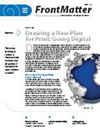安第斯山脉的长期环境和社会监测:最新技术、知识差距和综合议程的优先事项
IF 1.8
4区 环境科学与生态学
Q4 ENVIRONMENTAL SCIENCES
引用次数: 0
摘要
安第斯社会生态系统(SES)通过保护生物多样性、提供自然资源和调节供水,在南美洲人民的生计中发挥着关键作用。需要协调安第斯SES的长期社会生态监测(LTSEM),以便为可持续管理提供信息并增强复原力。我们结合了定量和定性的方法来确定最先进的状态,知识差距,并为针对安第斯LTSEM的研究议程监测优先事项。我们举行了参与性和跨学科会议,以设计安第斯社会经济系统运作和监测的概念模型。这与通过电子调查和积极搜索书目和山区监测网络确定的ltsem的主题和标签形成对比。大多数LTSEM涉及生物物理问题,一小部分涉及社会方面;参与性努力非常罕见。通过结合这两种方法,我们确定了研究重点,分为5类。我们的主要建议主张:(1)建立安第斯山脉SES综合模型,构建跨学科的长期研究方法;(2)协调独立的ltsem,预测安第斯山脉SES在环境变化情景下的功能;(3)纳入安第斯山脉系统的外部动力和驱动因素;(4)促进科学-政策对话,实现更有效的山地SES治理。(5)增加信息可及性,提高安第斯山地森林的适应性管理。本文章由计算机程序翻译,如有差异,请以英文原文为准。
Long-Term Environmental and Social Monitoring in the Andes: State of the Art, Knowledge Gaps, and Priorities for an Integrated Agenda
Andean social–ecological systems (SES) play a key role in the livelihoods of South American people by conserving biodiversity, providing natural resources, and regulating water supply. Long-term social–ecological monitoring (LTSEM) of Andean SES needs to be coordinated to inform sustainable management and increase resilience. We combined quantitative and qualitative approaches to identify the state of the art, knowledge gaps, and monitoring priorities for a research agenda targeted toward Andean LTSEM. We carried out participatory and transdisciplinary meetings to design a conceptual model of the functioning and monitoring of Andean SES. This was contrasted with the themes and labels of LTSEMs identified through an electronic survey and active searches of bibliographies and montane monitoring networks. Most LTSEM addressed biophysical issues, with a minor fraction addressing social aspects; participatory efforts were very rare. By combining both approaches, we identified research priorities that were grouped into 5 categories. Our main proposals advocate: (1) the development of integrated models of Andean SES to frame a transdisciplinary approach in long-term studies, (2) the coordination of independent LTSEMs to forecast the functioning of Andean SES under environmental change scenarios, (3) the inclusion of external dynamics and drivers on Andean systems, (4) the promotion of science–policy dialogue to attain a more effective governance of mountain SES, and (5) the increase of information accessibility to improve the adaptive management of Andean SES.
求助全文
通过发布文献求助,成功后即可免费获取论文全文。
去求助
来源期刊
CiteScore
3.10
自引率
18.80%
发文量
36
审稿时长
4.5 months
期刊介绍:
MRD features three peer-reviewed sections: MountainDevelopment, which contains “Transformation Knowledge,” MountainResearch, which contains “Systems Knowledge,” and MountainAgenda, which contains “Target Knowledge.” In addition, the MountainPlatform section offers International Mountain Society members an opportunity to convey information about their mountain initiatives and priorities; and the MountainMedia section presents reviews of recent publications on mountains and mountain development.
Key research and development fields:
-Society and culture-
Policy, politics, and institutions-
Economy-
Bio- and geophysical environment-
Ecosystems and cycles-
Environmental risks-
Resource and land use-
Energy, infrastructure, and services-
Methods and theories-
Regions

 求助内容:
求助内容: 应助结果提醒方式:
应助结果提醒方式:


